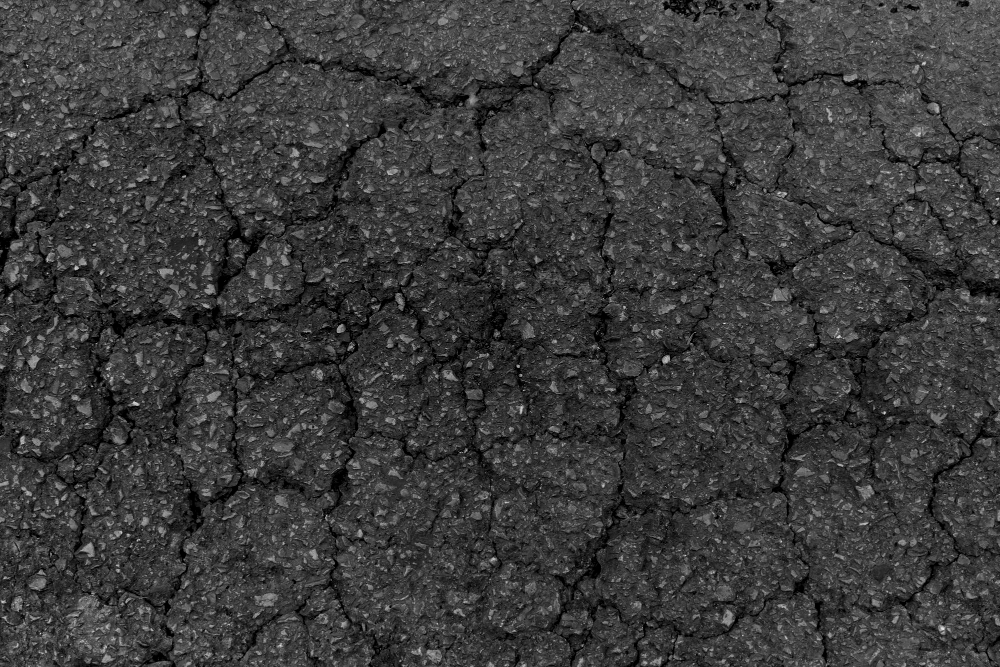Alligator Cracking: The Silent Killer of Asphalt Surfaces

Alligator cracking might sound like something you'd encounter in the Florida Everglades, but it's actually one of the most destructive forms of asphalt deterioration that property owners face. This distinctive pattern of interconnected cracks resembles the scales on an alligator's back, hence the name. Left untreated, these seemingly minor surface imperfections can quickly escalate into major structural problems that require complete pavement replacement.
Understanding how to identify, prevent, and repair alligator cracking can save property owners thousands of dollars in reconstruction costs. More importantly, addressing this issue promptly ensures the safety of vehicles and pedestrians who use your asphalt surfaces daily.
What Causes Alligator Cracking in Asphalt?
Alligator cracking doesn't appear overnight. This type of pavement distress develops through a combination of factors that weaken the asphalt structure over time.
Heavy Traffic Loads
Repeated exposure to heavy vehicles creates stress points in the asphalt. When the pavement cannot adequately distribute these loads, the surface begins to flex and eventually crack. Commercial properties, loading docks, and busy parking lots are particularly susceptible to this type of damage.
Poor Drainage Systems
Water is asphalt's worst enemy. When drainage systems fail or become clogged, water accumulates on the surface and eventually penetrates small cracks. During freeze-thaw cycles, this trapped water expands and contracts, widening existing cracks and creating new ones.
Inadequate Base Support
A weak or improperly prepared base layer cannot provide the necessary support for the asphalt surface. Over time, the pavement settles unevenly, creating stress concentrations that manifest as alligator cracking patterns.
Age and Weather Exposure
UV rays, temperature fluctuations, and oxidation gradually break down the binding agents in asphalt. As the pavement ages, it becomes more brittle and less able to flex under load, making it prone to cracking.
Identifying Alligator Cracking Early
Recognizing the early warning signs of alligator cracking allows property owners to take corrective action before extensive damage occurs.
Stage 1: Fine Hairline Cracks
The initial stage presents as a network of fine, interconnected cracks that form angular or rectangular patterns. These cracks are typically less than 1/8 inch wide and may be difficult to spot without close inspection.
Stage 2: Moderate Crack Development
As the condition progresses, cracks widen to approximately 1/4 inch and become more pronounced. The characteristic alligator scale pattern becomes clearly visible, and some loose material may be present around crack edges.
Stage 3: Severe Deterioration
Advanced alligator cracking features wide cracks exceeding 1/4 inch, with significant raveling and loose debris. At this stage, pieces of asphalt may break away completely, creating safety hazards and requiring immediate attention.
Professional Repair Methods for Alligator Cracking
The appropriate repair method depends on the severity of the cracking and the underlying cause of the problem. Experienced asphalt contractors assess each situation individually to recommend the most cost-effective solution.
Crack Sealing and Filling
For early-stage alligator cracking, professional crack sealing can prevent water infiltration and slow further deterioration. This process involves cleaning out loose debris and applying specialized sealants that flex with temperature changes.
Full-Depth Patching
Moderate to severe alligator cracking typically requires removing the damaged asphalt down to the base layer. Contractors excavate the affected area, address any base problems, and install new asphalt to match the surrounding pavement thickness.
Overlay Application
When alligator cracking covers large areas but the base remains structurally sound, an asphalt overlay may provide a cost-effective solution. This method involves applying a new layer of asphalt over the existing surface after proper preparation.
Complete Reconstruction
Severely damaged pavements with extensive alligator cracking may require complete removal and reconstruction. While this represents the highest upfront cost, it provides the longest-lasting solution and eliminates underlying structural problems.
Prevention Strategies That Work
Preventing alligator cracking is far more economical than repairing it after damage occurs. Property owners can implement several strategies to extend their pavement's lifespan.
Regular Sealcoating Applications
Professional sealcoating creates a protective barrier against UV rays, water penetration, and chemical damage. Most asphalt contractors recommend sealcoating every 2-3 years, depending on traffic levels and climate conditions.
Prompt Crack Repair
Addressing individual cracks immediately prevents them from spreading and interconnecting into alligator patterns. Regular pavement inspections help identify problem areas before they become extensive.
Proper Drainage Maintenance
Keeping drainage systems clear and functional prevents water accumulation that contributes to crack development. Regular cleaning of catch basins, gutters, and drainage channels is essential.
Load Management
Understanding your pavement's load capacity and avoiding excessive vehicle weights helps prevent stress-related cracking. Consider restricting heavy truck access to designated areas with reinforced pavement.
Why Professional Assessment Matters
While property owners can identify obvious signs of alligator cracking, determining the best repair approach requires professional expertise. Qualified asphalt contractors possess the knowledge and equipment necessary to evaluate underlying causes and recommend appropriate solutions.
Professional contractors also understand local climate conditions, soil characteristics, and building codes that affect repair success. They can identify whether surface treatments will suffice or if more extensive reconstruction is necessary.
Protecting Your Investment
Alligator cracking represents a serious threat to your asphalt investment, but prompt action can prevent minor problems from becoming major expenses. Regular maintenance, professional inspections, and quality repairs help ensure your pavement provides years of reliable service.
The key to successful alligator crack repair lies in addressing both the visible symptoms and underlying causes. Surface treatments alone may provide temporary fixes, but comprehensive solutions require examining drainage, base support, and structural adequacy.
If you're looking for asphalt contractors in Lake County, FL, contact Reliable Pavement Maintenance today for free estimates. Our experienced team can assess your pavement condition and recommend the most effective repair strategies to protect your property investment.